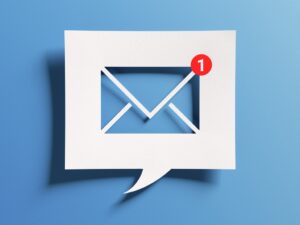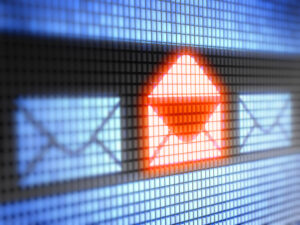Essential email guidance for the COVID-19 era
Follow this data-backed expertise from PoliteMail’s top exec to improve your inbox strategy.

Email is still the most reliable way to reach your employees with crucial communication.
Unfortunately, many employers misuse, misjudge and flat-out misunderstand how to maximize this powerful messaging tool, says Michael DesRochers, CEO of PoliteMail. Email should be an asset, not treated as a nuisance, a liability or a neglected afterthought, he says. He suggests avoiding two blunders in particular.
“The two biggest mistakes are completely abandoning email broadcasts for intranet posts—and using email messages for long-winded information.”
Citing PoliteMail data to back his claim, DesRochers says that “less than 20% of your audience will read intranet-only messaging.” PoliteMail’s findings, which come from an analysis of more than 600 million internal emails, also found that brevity is best. As Desrochers says, “The longer and more content-heavy your email (for example sending more than 10 articles or 10 links in one message), the less people actually read.”
How to reach employees right now
At Ragan’s Oct. 14 Internal Communications & Employee Experience virtual conference, DesRochers will join an esteemed panel of experts to share expertise on how communicators can succeed during this tumultuous era.
If improving email effectiveness is on your list—and it certainly should be—you’ll be privy to insider takeaways that will make an immediate impact on your work. Such as, which inbox metrics truly matter, and what email trends will endure beyond COVID-19?
DesRochers’ team has tracked an email volume explosion since the COVID pandemic spread dramatically in March. With most workforces still largely remote, and with no end to the pandemic in sight, employers should continue beefing up engagement tactics and employee communications strategies accordingly.
How should you measure progress and success in the meantime? DesRochers says the metrics you should seek depend on “what your message is intended to accomplish.” He advises against putting much stock into surface-level numbers that don’t reveal anything substantive about how messaging is being received (or not). “Email opens,” for example, might show how many people clicked your message—but who actually read it? Instead, Desrochers advises, “Attention rate, which is people who opened the email and didn’t simply ignore it, is the most important metric in terms of audience reach.”
He continues:
“Depending if your message intent is for them to understand something or do something, then readership and click rate are also important to measure.”
Of course, no one knows what’s next in this topsy-turvy environment, and that makes planning tricky. But you can bet your bottom dollar that email will remain an indispensable pillar of business communication. And adapting your approach based on what’s resonating with employees is critical, as is finding ways to reach busy, overwhelmed employees. DesRochers predicts big trends toward comms integration, interactive messaging and “live” content.
“We see live email content, whether data or video feeds or feedback loops, becoming more widespread and valuable,” he says. “We also see a trend toward more email integration with online/live meeting services and intranet sites. These three digital communications channels will not converge, but will better integrate, cooperate and automate to ensure employees are receiving the corporate communications they want and need.”
Learn more ways to maximize email and other crucial employee comms at our Oct. 14 Internal Communications & Employee Experience virtual conference. Experts will share how to succeed during—and after—the pandemic.







